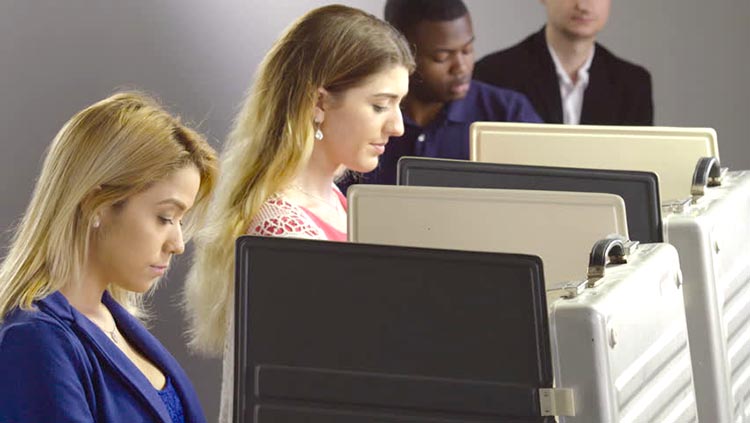
State-by-state youth turnout ranged from 32% in South Dakota and 67% in New Jersey; electoral laws and policies correlated with youth voting rates
From TuftsNow
April 29, 2021
Half of Americans ages 18-29 cast a ballot in the 2020 general election, one of the highest youth voting rates in recent history and an 11-point increase from 2016 (from 39% to 50%). Exclusive new estimates of youth voting in 2020 are based on recently available voter file data from 41 states analyzed by the Center for Information & Research on Civic Learning and Engagement (CIRCLE), the preeminent, non-partisan research center on youth engagement at Tufts University’s Jonathan M. Tisch College of Civic Life. CIRCLE’s analysis confirms young people’s commitment to political engagement, explores the impact of voting laws on youth turnout, and highlights the work still needed to facilitate young people’s electoral participation across the country.
In a high-turnout election, young people exceeded national increases in voter participation among the overall electorate. Estimates from the United States Elections Project based on data from election offices suggest that overall voter turnout increased seven percentage points from 2016 to 2020, while the new report from CIRCLE finds it increased even more (11 points) among youth.
Previous CIRCLE research underscored that young voters played a crucial role in key 2020 House and Senate races, as well as in President Joe Biden’s victory over former President Donald Trump.
Key findings from this new analysis of national and state-by-state youth voter turnout include:
Youth voter turnout rates varied widely across the country. New Jersey (67%), Minnesota (65%), and Colorado (63%) had the highest statewide youth turnout rates, while South Dakota (32%), Oklahoma (34%), and Arkansas (35%) had the lowest. The largest increases from 2016 in youth voter turnout were in New Jersey (+22 percentage points), Arizona (+18 points), and California and Washington (both +17 points). No state for which the researchers have data saw a decrease in turnout.
Electoral laws and policies had an impact. Researchers found a strong association between higher youth voting and states with more policies in place that make voting and registration easier, such as automatic registration, same-day registration, early voting, no-excuse absentee voting, etc. In aggregate, states with four or more of these policies had 54% youth voter turnout; states with one to three of these policies had 43%.
Turnout among new voters is still lagging. CIRCLE estimates that voter turnout among 18- and 19-year-olds was 46%. Historically, newly eligible youth have voted at lower rates than their slightly older peers, and that was once again the case in 2020. In some states, the difference was stark: in South Dakota, where 32% of young people under 30 voted, just 12% of 18- and 19-year-olds cast a ballot.
Voter turnout was highest in states that mailed ballots to all registered voters. Even as vote-by-mail took on increased importance in 2020 due to the pandemic, states approached it differently. Youth voter turnout was highest (57%), and had the largest increases over 2016, in states that automatically mailed ballots to voters. Conversely, states with the most restrictive vote-by-mail laws had the lowest youth turnout, at 42%.
Reliable vote history data by age is not available for AK, DC, HI, MD, MS, NH, ND, UT, WI and WY, so they were excluded from the analysis.
“Young people likely voted at one of the highest rates in decades, cementing their place as a pivotal part of the electorate, capable of shaping national priorities on issues like the pandemic, the environment, and racial justice,” said Kei Kawashima-Ginsberg, director of Tisch College’s CIRCLE. “This impressive outcome reflects the efforts and accomplishments of advocates who modernized voting and registration policies to expand access to electoral participation, and of young organizers who worked tirelessly and effectively to register and mobilize voters. Their successful work charts a course for states across the country to knock down barriers, expand the electorate, and grow voters for 2022 and beyond.”
Photo: Shutterstock
Read this and other stories at TuftsNow

